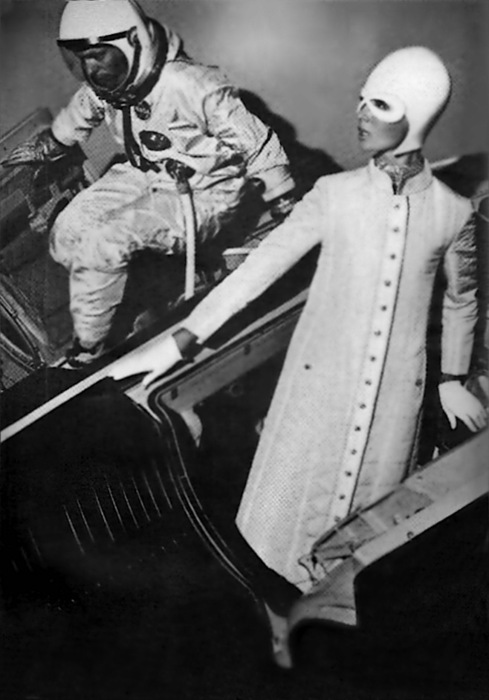
"The oceans will boil away and the atmosphere will dry out as water vapor leaks into space." (Image by Pierre Cardin.)
As the sun ages, its light becomes stronger, not weaker. What to do when the future grows too bright, if we even make it that far? From Andrew Grant’s excellent new Discover article, “How to Survive the End of the Universe“:
“For [theoretical physicist Glenn] Starkman and other futurists, the fun begins a billion years from now, a span 5,000 times as long as the era in which Homo sapiens has roamed Earth. Making the generous assumption that humans can survive multiple ice ages and deflect an inevitable asteroid or comet strike (NASA predicts that between now and then, no fewer than 10 the size of the rock that wiped out the dinosaurs will hit), the researchers forecast we will then encounter a much bigger problem: an aging sun.
Stable stars like the sun shine by fusing hydrogen atoms together to produce helium and energy. But as a star grows older, the accumulating helium at the core pushes those energetic hydrogen reactions outward. As a result, the star expands and throws more and more heat into the universe. Today’s sun is already 40 percent brighter than it was when it was born 4.6 billion years ago. According to a 2008 model by astronomers K.P. Schröder and Robert Connon Smith of the University of Sussex, England, in a billion years the sun will unleash 10 percent more energy than it does now, inducing an irrefutable case of global warming here on Earth. The oceans will boil away and the atmosphere will dry out as water vapor leaks into space, and temperatures will soar past 700 degrees Fahrenheit, all of which will transform our planet into a Venusian hell-scape choked with thick clouds of sulfur and carbon dioxide. Bacteria might temporarily persist in tiny pockets of liquid water deep beneath the surface, but humanity’s run in these parts would be over.
[Astronomer Greg] Laughlin was intrigued by the idea of using simulations to traverse enormous gulfs of time: ‘It opened my eyes to the fact that things will still be there in timescales that dwarf the current age of the universe.’
Such a cataclysmic outcome might not matter, though, if proactive Earthlings figure out a way to colonize Mars first. The Red Planet offers a lot of advantages as a safety spot: It is relatively close and appears to contain many of life’s required ingredients. A series of robotic missions, from Viking in the 1970s to the Spirit rover still roaming Mars today, have observed ancient riverbeds and polar ice caps storing enough water to submerge the entire planet in an ocean 40 feet deep. This past August the Mars Reconnaissance Orbiter beamed back time-lapse photos suggesting that salty liquid water still flows on the surface.
The main deterrent to human habitation on Mars is that it is too cold. A brightening sun could solve that—or humans could get the job started without having to wait a billion years. ‘From what we know, Mars did have life and oceans and a thick atmosphere,’ says NASA planetary scientist Christopher McKay. ‘And we could bring that back.'”
Tags: Andrew Grant, Christopher McKay, Glenn Starkman, Greg Laughlin
